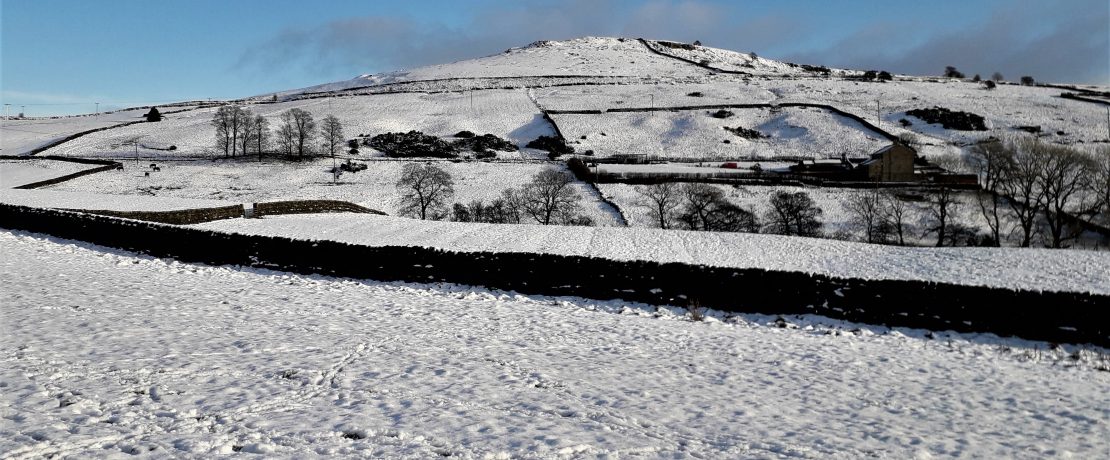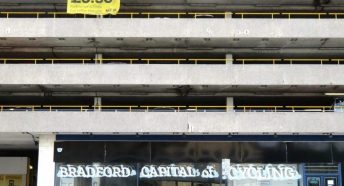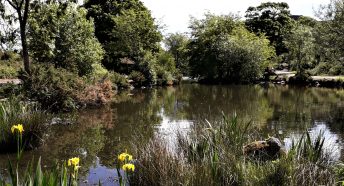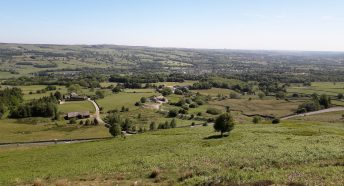Bradford Local Plan: Our ‘Reasonable Alternative’ (Part 2)
CPRE has identified that the Draft Plan does not properly consider reasonable alternatives to the policies proposed. In most cases, the alternatives presented are merely whether policies should contain more or less detail, within the same underlying approach. You can read and download our full response here.
We have developed a reasonable alternative that takes into account issues of climate, density and inequality. Part One highlights issues around housing need, traffic and land use. Below are our thoughts on inequalities and the environment.
Inequalities and the Environment
6. Inequalities
6.1. The five purposes of Green Belt include preventing the merger of towns and safeguarding the countryside from encroachment. In this context it is deeply ironic – as well as plainly wrong – that the largest single loss of Green Belt proposed in the whole Plan should be in the already narrow stretch of Green Belt between the cities of Leeds and Bradford, in the Tong Valley.
6.2. The adjacent community of Holme Wood suffers from significant social deprivation, and there is no evidence offered as to how building an urban extension next to Holme Wood would address the needs of that community. At the same time, the scale of countryside loss within this Green Belt pinch-point means that the social impacts of losing access to countryside and green infrastructure falling disproportionately on this already disadvantaged community.
6.3. The Plan appears to say (para 5.3.26) that the Holme Wood urban extension is co-dependent with the South East Bradford Access Road (SEBAR), yet the SEBAR is absent from the Plan as a transport proposal. This is a serious problem, because:
- The SEBAR is an out-moded, anomalous and wholly unsustainable proposal that would directly undermine many other objectives of the Plan in terms of reducing road traffic and promoting walking and cycling;
- The SEBAR would bisect the entire Green Belt between Leeds and Bradford, causing physical separation and significant landscape impact in its own right, and also generating pressure for further built development along the road corridor;
- If successful development of site allocations within the Plan is dependent on a road scheme that is not, in itself, in the Plan, then those site allocations cannot be deemed to be deliverable;
- The SEBAR – as with most major road schemes passing through or near to deprived communities – is likely to have a predominantly negative impact on Holme Wood Estate residents, who will experience the negative impacts of countryside loss, noise and air pollution to a much greater extent than any other community, without being able to benefit from improved mobility.
6.4. The Airport
6.5. Whilst the airport is of course an existing feature of both the West Yorkshire economy and the pattern of land-use and travel, it is a plainly anomalous feature of a low-carbon future for the district. And whilst aviation-related emissions remain outside the Council’s responsibility, this also means that possible future moves towards low-carbon aircraft cannot be regarded as contributing towards West Yorkshire achieving its net-zero 2038 target.
6.6. On the other hand, promoting the airport as a key asset for economic growth, and thereby of the spatial strategy for Bradford, as Policy SP2 currently does, locks in a degree of economic dependence upon a uniquely high-carbon activity, and influences land-use by providing a supposed justification for greenfield, road-based development between the city and the airport, including Green Belt. In the event that low-carbon aviation cannot be achieved rapidly enough to meet carbon budgets, significant contraction of the aviation industry may be inevitable, and Leeds Bradford will remain relatively inaccessible by public transport compared to several other regional airports, especially Manchester. The combination of this uncertain future and the reliance on a high-carbon sector as an economic driver create a situation which is, in CPRE’s view, unsustainable, and promoting growth on that basis does not provide exceptional circumstances for releasing Green Belt land. It is imperative that an alternative strategy be considered that is not contingent on the airport.
7. Environmental Net Gain
7.1. Whilst net gain as a technical concept stems from biodiversity policy, there are at least 10 different references across NPPF that effectively require net gain approaches to a range of policies. For each of these, we briefly comment here on the Bradford draft Plan’s compliance.
7.2. NPPF Para 32 seeks simultaneous progress against economic, social and environmental objectives. Para 3.5.9 of the draft Plan identifies “issues in the provision of sites to support the development of high growth sectors and low carbon economy oriented businesses”. Considering that West Yorkshire has committed to a target of net-zero carbon by the end of this plan period in 2038 it is self-evident that all growth sectors and all transformations in the economy must by default be demonstrably low or zero carbon in outcome. Without this, then there is likely to be short-term economic progress at the expense of medium-term social and environmental objectives, and it is also likely that the economy will suffer in the medium term due to increased exposure to climate-related risks. We would therefore expect the priority business sectors in section three of the policy would each to be supported explicitly by a net zero 2038 Action Plan investment plan; and that SP6(B), in identifying sites and locations for employment would also make clear that economic development proposals will be supported where they deliver measurable progress toward zero carbon economy.
7.3. NPPF Para 91(c) describes approach to healthy lifestyles by identifying needs and improving provision of amenities. The draft Plan is potentially strong here thanks to policies SP7, SP10 and SP15, but implementation of these policies is highly dependent on the location and the development expectations of the proposed site allocations, about which we have significant concerns.
7.4. NPPF Para 97 (d) requires that open spaces losses should be replaced by ‘equivalent or better’ provision. This is covered by policy CO1.
7.5. NPPF Para 102(d) requires a net gain approach to the environmental impacts of traffic and transport infrastructure. Whilst we are generally supportive of the draft Plan’s approach to transport, we do have some concerns. The otherwise excellent Policy TR2 opens with the requirement that “Growth in transport must not come at disproportionate expense to the built, natural and historic environments”, which is in fact a clear acceptance that some environmental cost is permissible. That is not the same as a net gain approach and therefore not compatible with NPPF 102(d).
7.6. We are greatly concerned that the South-East Bradford Access Road (SEBAR), which would very likely exact the single largest traffic-related environmental impact, would inevitably generate large amounts of additional traffic, and therefore run directly counter to most of the other objectives of the Plan, is conspicuously missing from the Plan’s proposals despite being referred to in para 5.3.26. It is not possible to assess the plan-wide environmental impacts of traffic and transport infrastructure without factoring this road, and a critical reasonable alternative is to plan for a future in which this scheme does not go ahead.
7.7. NPPF Para 110(a) requires development to “give priority first to pedestrian and cycle” movements both within a scheme and with neighbouring areas, meaning that a net improvement to walking and cycling in a neighbourhood should be a reasonable expected outcome of a development. Broadly the Plan deals with this well, with the striking exception of apparently permitting lower densities on many site allocations than are needed to deliver walkable neighbourhoods. We also note that the clear hierarchy of car parking expectations set out in para 4.10.2 of the Plan does not read across into policy TR5, when in fact this hierarchy needs to be clearly implementable. Further, policy HO1(d) merely requires that “urban housing schemes in sustainable locations should not exceed the council’s maximum car parking standards…” and inevitably this is the development management criteria that will prevail in most planning applications.
7.8. NPPF Para 118(a) identifies the potential for land to fulfil multiple uses at the same time (multi-functionality). A significant number of development allocations overlap with the green infrastructure network. Whilst this is recognized as a constraint in the site allocation assessments, it is not currently possible to discern what the net effect for the GI network of the development of these sites will be. We would support the inclusion of a Green Infrastructure Standards policy (EN1).
7.9. NPPF Para 141 requires local authorities to plan positively for the beneficial use of their Green Belt. Coverage of this in the draft Plan is very disappointing. Para 3.5.28 simply excuses harm to the Green Belt on the basis that the reduction in area is of a “very limited overall quantum” and then says that planning positively for the Green Belt “may require a wider co-ordinated approach”. In other words, there is no strategy for enhancing the beneficial use of the Green belt.
7.10. NPPF Paras 157 and 160 demand a net improvement to flood risk as a result of new development. Policy EN7 does not achieve this. It manages the flood risks to new development, and part A4 of the policy requires new development not to increase flood risk elsewhere, but there is no policy expectation in the Plan for new development to produce a net reduction in flood risk.
7.11. NPPF Paras 170(d) and 174 identify the role of ecological networks and require biodiversity net gain. There is currently an apparent internal contradiction within policy EN2. This requires a biodiversity net gain approach at the development management stage (parts H to N of the policy), but each of the provisions in parts C, D, F and G of the policy allow for a degree of harm to species and habitats; and there is no clear way to ensure that the cumulative impact of this policy will be a net benefit to biodiversity and geodiversity.
7.12. NPPF Para 171 demands the “enhancement of natural capital at catchment or landscape scale across authority boundaries”. There is no evidence of this cross-boundary approach having been pursued in the relevant policies.









